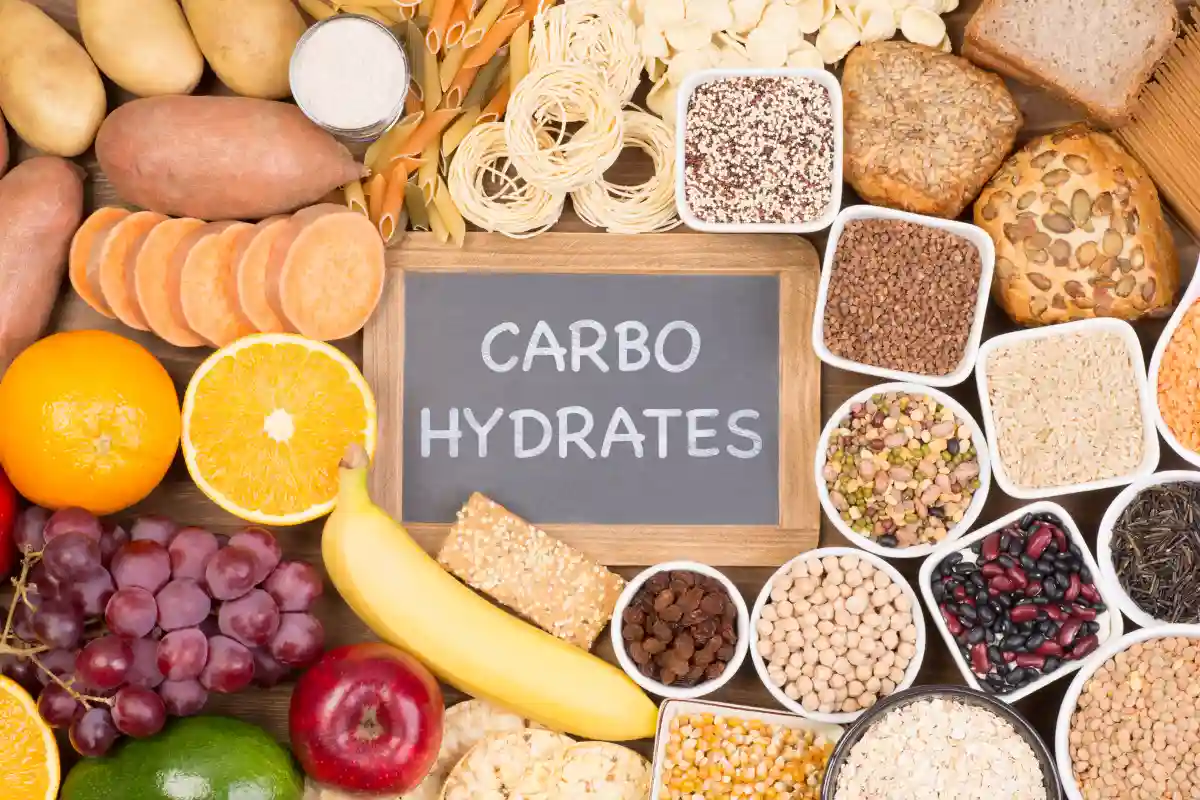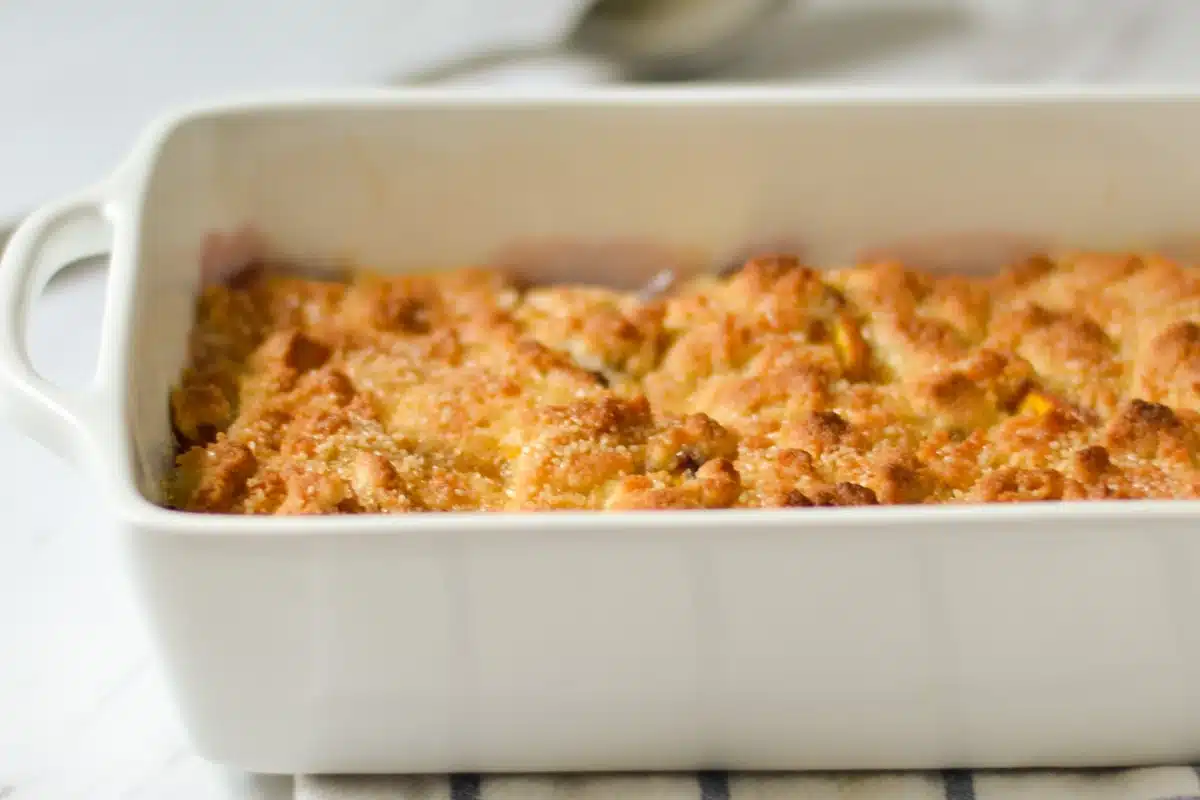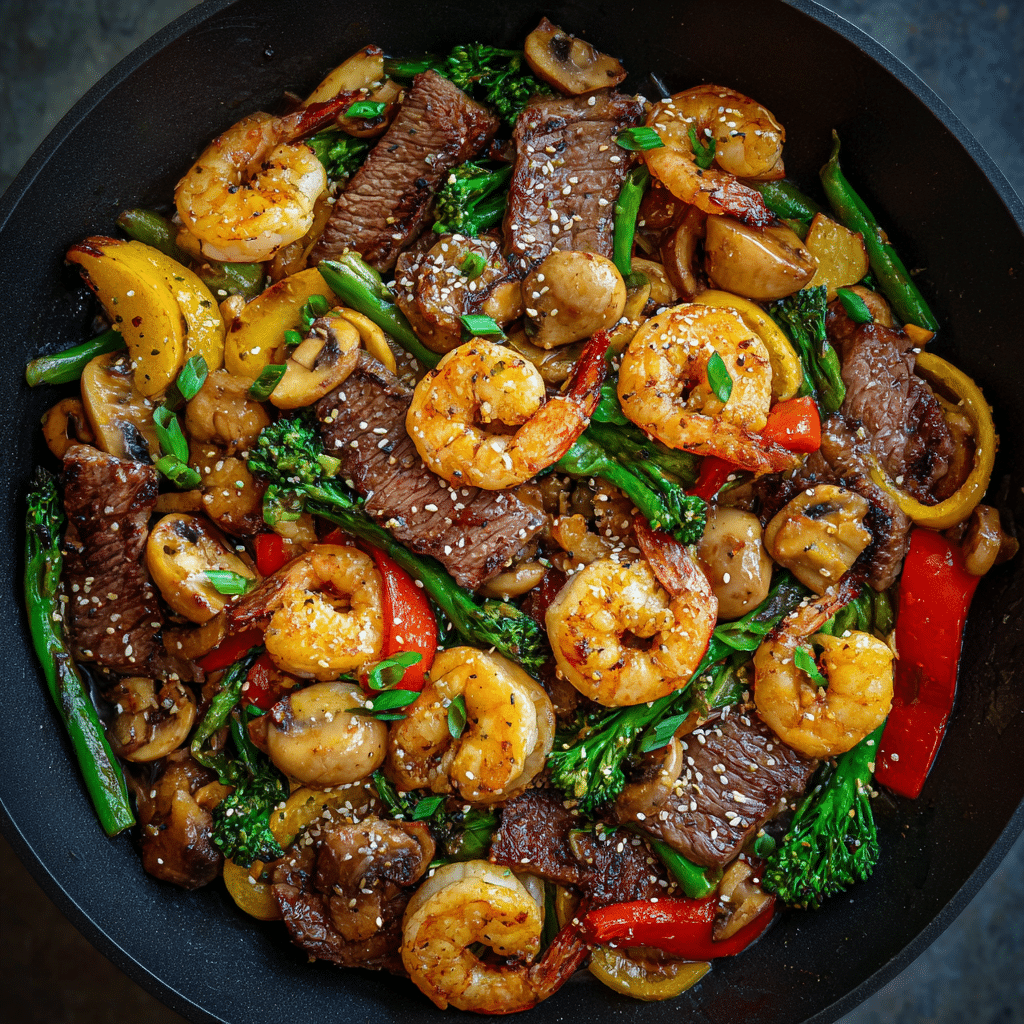In the culinary world, the quest for the perfect balance between taste and health is never-ending. Among the myriad of dishes that strike this delicate balance, chicken cobbler stands out—not just for its comforting warmth but also for its nutritional profile. This article dives deep into the heart of chicken cobbler, exploring not only its carb content but also how it fits into various diets, and how to make it healthier without sacrificing flavor. So, whether you’re a fitness enthusiast, someone with dietary restrictions, or just a curious foodie, join us on this flavorful journey.
Part 1: Understanding Chicken Cobbler
What is Chicken Cobbler?
Ah, chicken cobbler! Just the name brings to mind a dish filled with the comforting, hearty goodness of tender chicken beneath a golden, crumbly crust. But what exactly is it? At its core, Ultimate Chicken Cobbler Recipe is a savory delight, a cousin of the more widely known fruit cobbler. Instead of a sweet filling, it boasts a savory mixture of chicken, vegetables, and gravy, all topped with a biscuit or dumpling crust. It’s the kind of meal that feels like a warm hug on a chilly evening.
Popularity and Dietary Considerations
Now, you might wonder, “Why all the fuss about chicken cobbler?” Well, for starters, it’s incredibly versatile. From the choice of vegetables to the type of crust, it can be tailored to suit a wide range of taste preferences and dietary needs. Plus, it’s a crowd-pleaser, perfect for family dinners or potluck gatherings.
But here’s the rub: like any dish, chicken cobbler’s nutritional value can vary widely depending on how it’s prepared. For those watching their carb intake, the traditional biscuit topping might raise eyebrows. Yet, fear not! With a few tweaks, chicken cobbler can fit into a low-carb diet, a gluten-free lifestyle, or even a keto regimen. The key? It’s all in the ingredients and how you put them together.
So, whether you’re a carb counter, a gluten avoider, or just looking to indulge in a guilt-free version of this classic dish, stay tuned. We’re about to embark on a culinary adventure that promises to be as enlightening as it is delicious.
Part 2: The Nutritional Content of Chicken Cobbler

Calories and Macronutrients
Diving into the heart of chicken cobbler, let’s peel back the layers to understand what makes this dish tick nutritionally. At first glance, a serving of chicken cobbler might seem like just a comforting meal, but it’s packed with a variety of nutrients that can either make or break your diet goals. Typically, a hearty serving contains a significant amount of calories, thanks to the combination of chicken, vegetables, and that irresistible crust. But here’s the kicker: the macronutrient distribution is where things get interesting.
Carbohydrates play a starring role in chicken cobbler, primarily due to the crust and any root vegetables included in the filling. A standard serving could have upwards of 46 grams of carbs. However, not all carbs are created equal. The net carbs, which subtract dietary fiber from the total carb count, can provide a clearer picture for those monitoring their carb intake closely.
Then there’s the fat content, contributed by the chicken (especially if you’re using thigh meat or enjoying a richer gravy) and the crust. Yet, amidst the fat and carbs, chicken cobbler shines as a protein-packed dish, thanks to the generous amount of chicken nestled beneath the crust. This protein punch makes it a filling meal that can satisfy hunger and aid in muscle repair and growth.
Vitamins and Minerals
But wait, there’s more! Beyond the macros, chicken cobbler can be a treasure trove of vitamins and minerals, particularly if you’re savvy with your vegetable choices. The chicken contributes B vitamins, essential for energy production and cognitive health, while the vegetables can up the ante with vitamins A and C, potassium, and iron. These nutrients play crucial roles in maintaining vision, supporting the immune system, and ensuring muscle function.
However, the nutritional profile of your chicken cobbler can swing dramatically based on your recipe choices. Opting for a lighter, broth-based gravy and a whole-grain crust can transform this dish into a nutrient-dense meal that supports your health goals without skimping on flavor.
In essence, chicken cobbler can be as nutritious as it is delicious, serving up a balanced meal that comforts the soul and nourishes the body. Yet, the key to unlocking its health potential lies in mindful ingredient selection and preparation methods. So, whether you’re indulging in a Sunday family dinner or prepping meals for a health-conscious week ahead, chicken cobbler offers a canvas for culinary creativity and nutritional optimization.
Part 3: Analyzing the Carbs in Chicken Cobbler

Total Carbs vs. Net Carbs
When it comes to understanding the impact of chicken cobbler on your diet, especially if you’re watching your carbohydrate intake, distinguishing between total carbs and net carbs becomes crucial. Total carbs include all the sugars, fibers, and starches found in the food, giving you a broad overview of its carbohydrate content. However, not all carbs affect your body in the same way.
This is where net carbs come into play, offering a more nuanced view. By subtracting the grams of fiber from the total carbs, we get net carbs, which represent the carbohydrates that actually impact your blood sugar levels. Fiber, after all, passes through your body undigested, so it doesn’t spike your glucose like other carbs do. For those on a low-carb diet or managing diabetes, focusing on net carbs can be a game-changer, allowing for more flexibility and accuracy in meal planning.
The Role of Fiber and Sugars
Fiber deserves a spotlight for its role in not only mitigating the impact of carbs on blood sugar but also for its numerous health benefits. It aids in digestion, helps maintain a healthy weight, and can lower cholesterol levels. In the context of chicken cobbler, incorporating high-fiber vegetables or opting for a whole-grain crust can significantly enhance the dish’s nutritional profile, making it more diet-friendly and healthful.
On the flip side, sugars, particularly added sugars, can quickly turn a seemingly healthy meal into a dietary pitfall. While traditional chicken cobbler recipes might not be high in added sugars, variations in ingredients, especially in the crust or gravy, can introduce more sugars than you might expect. Being mindful of these additions is key to keeping your chicken cobbler within the realms of a balanced diet.
In essence, the carbohydrate content of chicken cobbler is not just a number. It’s a complex interplay of different types of carbs that can have varying effects on your health. By focusing on net carbs and incorporating fiber-rich ingredients, you can enjoy this comforting dish without derailing your dietary goals. Whether you’re aiming for a low-carb, keto, or simply a more balanced diet, understanding and adjusting the carbs in your chicken cobbler can make all the difference.
Part 4: Chicken Cobbler in Different Diets
Is Chicken Cobbler Keto-Friendly?
For those navigating the keto diet, the traditional chicken cobbler, with its biscuit or dumpling crust, might seem off-limits at first glance. However, the essence of keto—focusing on low carbs, moderate protein, and high fats—can still embrace chicken cobbler with a few clever tweaks. By substituting the high-carb crust with alternatives like almond flour or coconut flour, you can transform this dish into a keto delight. Moreover, enriching the filling with keto-friendly veggies and perhaps a bit more fat (think cream or cheese) can align the dish with your dietary goals, ensuring you don’t miss out on this comforting classic.
Gluten-Free and Low-Carb Diets
Gluten-free and low-carb diets have surged in popularity, driven by health concerns and dietary preferences. Fortunately, chicken cobbler lends itself well to modifications that cater to these dietary needs. For a gluten-free version, simply ensure that your thickening agents (for the gravy) and crust alternatives are free from gluten-containing ingredients. Options like gluten-free flour blends or even mashed cauliflower for a topping can keep the essence of the dish intact while making it safe for those with gluten sensitivities or celiac disease.
On the low-carb front, beyond just tweaking the crust, consider the overall carb content of the filling. Opting for low-carb vegetables and being mindful of any added sugars or high-carb thickeners can help keep the carb count in check. This approach allows the dish to fit seamlessly into a low-carb lifestyle, providing the comfort and taste of chicken cobbler without the carb overload.
In the realm of dietary considerations, chicken cobbler proves to be a versatile dish that can be adapted to fit a range of nutritional needs and preferences. Whether you’re keto, gluten-free, low-carb, or simply seeking a healthier version of this comfort food, a few adjustments can make chicken cobbler a suitable and enjoyable option. The key lies in choosing the right ingredients and being creative with substitutions, ensuring that you can indulge in this cozy dish without compromising your dietary goals.
Part 5: Healthier Alternatives and Modifications
Low-Carb Ingredients for Chicken Cobbler
In the quest for a healthier chicken cobbler, focusing on low-carb ingredients is a fantastic starting point. The traditional crust, often laden with carbs, can be reimagined with alternatives that are not only lower in carbs but also packed with nutrients. Almond flour or coconut flour can replace regular flour, offering a delightful texture and flavor while significantly cutting down on carbs. For the filling, lean cuts of chicken reduce fat content without compromising protein, and low-carb vegetables like zucchini, bell peppers, and mushrooms add volume, fiber, and vitamins without the carb load.
Cooking Methods and Their Impact on Nutritional Value
The way you cook your chicken cobbler can also influence its nutritional profile. Baking, a common method for preparing cobbler, is already a healthier option compared to frying or sautéing in large amounts of oil. However, you can enhance the health benefits further by choosing to steam or sauté the vegetables in a small amount of healthy fat, like olive oil or avocado oil, before adding them to the cobbler. This method preserves the nutrients in the vegetables and adds healthy fats to your dish.
Moreover, consider the gravy or sauce that brings the cobbler together. Traditional recipes may call for cream or butter, but there are numerous ways to achieve a rich, satisfying texture without the added fats. Pureed cauliflower or broth-based sauces thickened with a small amount of arrowroot powder or xanthan gum can provide the creamy consistency and depth of flavor you crave, without the extra calories and fats.
Embracing these healthier alternatives and cooking methods doesn’t mean sacrificing taste for nutrition. On the contrary, it opens up a new dimension of flavors and textures, making your chicken cobbler not only a comfort food but also a guilt-free pleasure. By being mindful of the ingredients and how you prepare them, you can transform chicken cobbler into a dish that nourishes the body, delights the palate, and satisfies the soul.
Part 6: Frequently Asked Questions
How many carbs are in a typical serving of chicken cobbler?
The carb content in a serving of chicken cobbler can vary widely based on the recipe used. Traditional recipes, with their biscuit or dumpling crusts and vegetable-rich fillings, might hover around 46 grams of carbs per serving. However, this number can be significantly reduced with low-carb or keto-friendly adaptations, such as using almond flour for the crust and opting for low-carb vegetables.
Can chicken cobbler fit into a low-carb diet?
Absolutely! With a few clever tweaks to the traditional recipe, chicken cobbler can easily become a staple in a low-carb diet. Substituting high-carb ingredients for lower-carb alternatives—think almond flour instead of wheat flour for the crust, and focusing on low-carb vegetables for the filling—can dramatically reduce the carb count without compromising on taste or satisfaction.
Are there gluten-free versions of chicken cobbler?
Yes, there are many ways to make a gluten-free chicken cobbler. The key lies in replacing the traditional flour used in the crust and thickening the gravy with gluten-free alternatives. Gluten-free all-purpose flour, cornstarch, or arrowroot powder can be used to thicken the gravy, while the crust can be made from gluten-free biscuit mixes or by using gluten-free flours like rice flour or coconut flour. These substitutions allow those with gluten sensitivities or celiac disease to enjoy chicken cobbler without worry.
These FAQs highlight the versatility of chicken cobbler, showcasing its ability to adapt to various dietary needs and preferences. Whether you’re counting carbs, avoiding gluten, or simply seeking a healthier version of this comforting dish, there’s a chicken cobbler recipe out there for you. By being mindful of the ingredients and making smart substitutions, you can enjoy this classic comfort food in a way that aligns with your dietary goals.
Part 7: Summary and Final Thoughts
As we wrap up our culinary journey through the world of chicken cobbler, it’s clear that this dish is much more than a simple comfort food. It’s a versatile canvas that can be adapted to fit a wide array of dietary needs and preferences. From low-carb and keto-friendly versions to gluten-free adaptations, chicken cobbler can be tailored to suit your nutritional goals without sacrificing flavor or satisfaction.
The key to making a healthier chicken cobbler lies in mindful ingredient selection and innovative cooking methods. By choosing low-carb ingredients for the crust and filling, and employing healthier cooking techniques, you can transform this traditional dish into a nourishing meal that supports your health and wellness goals.
Moreover, the nutritional breakdown of chicken cobbler reveals its potential as a balanced meal, offering a good mix of proteins, fats, and carbs, along with essential vitamins and minerals.
In conclusion, chicken cobbler stands as a testament to the idea that comfort food can be both delicious and nutritious. Whether you’re looking to reduce carbs, avoid gluten, or simply make healthier food choices, chicken cobbler offers a flexible and tasty option that can be enjoyed by all. So, the next time you’re in the mood for a comforting meal, remember that with a few simple tweaks, chicken cobbler can be a guilt-free delight that nourishes your body and warms your soul.
Recommended External Links:
- American Diabetes Association – Anchor Text: “managing dietary needs with diabetes”
- Celiac Disease Foundation – Anchor Text: “understanding gluten-free diets”
- Keto Diet Resource – Anchor Text: “exploring keto-friendly meals”



